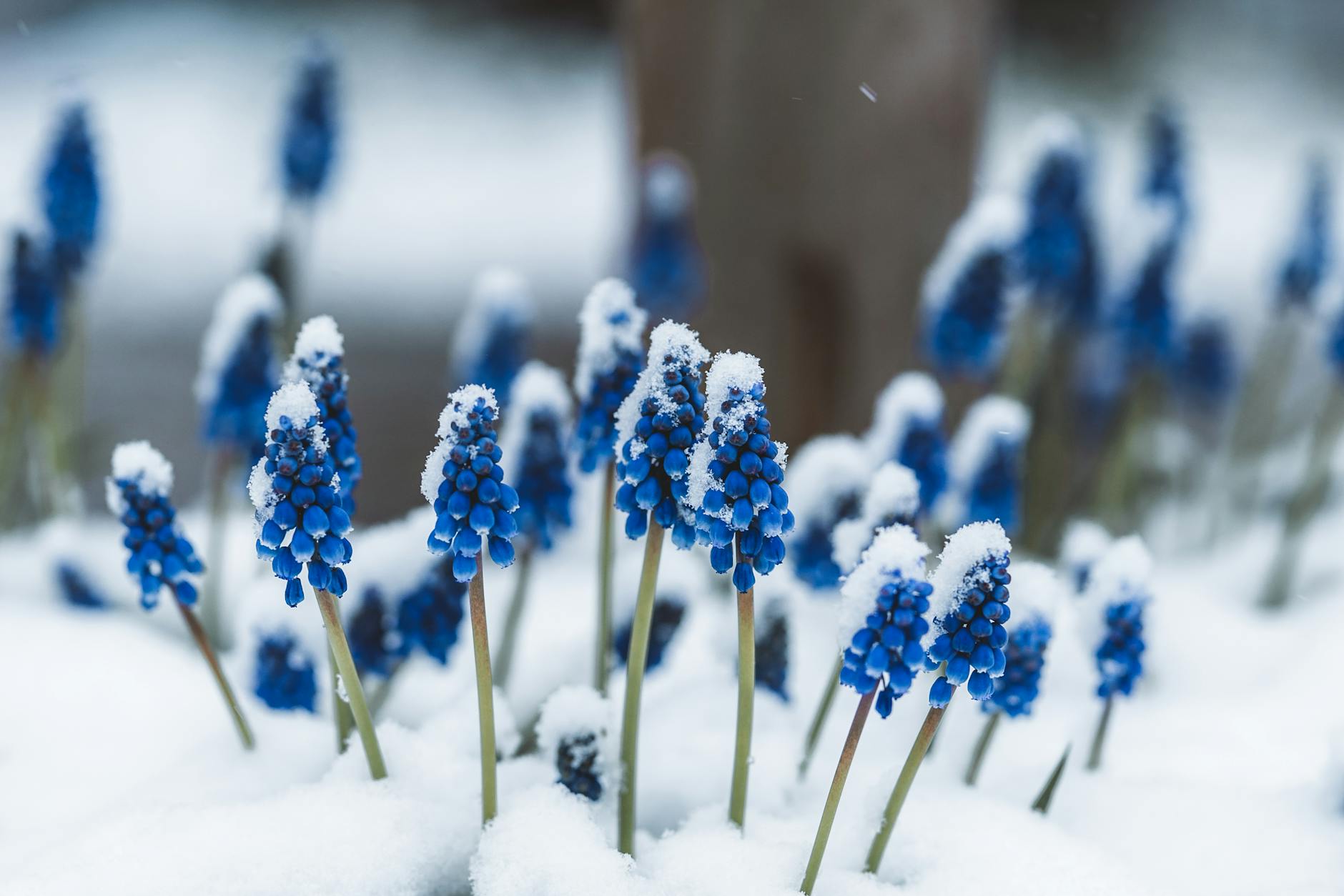As late winter transitions into early spring, nature begins to awaken from its slumber, offering a myriad of opportunities for outdoor exploration and learning. In this article, we’ll explore nature-based STEM and STEAM learning in AI/AN early childhood education, and tips on removing barriers to all-season outdoor learning.
Embracing the Changing Seasons
Late winter is a time of transition, marked by fluctuating temperatures, melting snow, and the first signs of new growth. This dynamic environment provides a rich backdrop for hands-on learning experiences that integrate STEM and STEAM principles with nature-based exploration. Although many areas are transitioning into early Spring, the early crocus shoots in my yard spent several days this week dusted with snow.
But remember, even with young children, outdoor exploration doesn’t hibernate in winter weather! Equip your program staff with the knowledge and tools they need to embrace the chill. Provide cold-weather gear and offer training on recognizing and addressing potential safety concerns. Encourage a mindset shift, emphasizing the benefits of outdoor learning during the winter months, from improved mood to enhanced cognitive development.
Effective Communication with Parents:
Clear communication with parents is key to successful all-season outdoor adventures. Share the benefits of nature-based learning in colder weather and highlight the measures taken to ensure the children’s comfort and safety. Provide a list of recommended rain and winter gear for children, or allocate program funds to provide them for kids. Use social media and newsletters to communicate reminders and tips about coming to school prepared for outdoor exploration. Encourage each classroom to submit an update and reminders so each classroom community is represented.
STEM and STEAM in Nature
Engaging children in nature-based STEM and STEAM activities not only fosters a deeper understanding of scientific concepts but also encourages creativity, critical thinking, and a sense of wonder. Here are some ideas for late winter adventures:
Exploring Changes in the Natural World:
- Take nature walks to observe the signs of seasonal transition, such as budding plants, migrating birds, or the sound of streams full of rain and snow melt.
- Observe the colors of late winter and early spring. Look from all angles, what surprising colors can the kids find?
- Close your eyes and listen, what sounds are heard? Are they animal sounds? Do the trees make sounds? Does the ground make sounds? Does the air/wind make a sound?
Nature-Based STEM Engineering and Cultural Learning:
- Gather or provide natural materials like branches, bark, logs, stones, snow, or hides for kids to experiment with building structures or shelters.
- Discussion Idea:
- How were homes and shelters built by the ancestors using natural materials?
Art and Creativity Inspired by Nature:
- Create nature-inspired art using materials found outdoors, such as leaves, pinecones, or snow.
- Explore the patterns, shapes, and colors in the natural world, where else do kids see these shapes or patterns?
Head Start Staff: Connecting STEM with Tribal Language Learning
An enriching STEM experience in indigenous early learning settings involves weaving Tribal language and cultural learning into the classroom, nutrition services, outdoor play, family engagement, and curriculum.
Coaching program staff on incorporating traditional language into daily activities, and aligning STEM concepts with cultural teachings not only preserves linguistic heritage but also deepens the cultural connection for children.
As we transition from winter to spring, there are many ways to integrate nature-based STEM and STEAM education into program activities. Little Hawk Consulting is here to support you every step of the way, ensuring that the wonders of the great outdoors are woven into the fabric of early childhood education.
Looking Ahead
Late winter is a time of transition and transformation, offering endless opportunities for nature-based STEM and STEAM education. By embracing the changing seasons, AI/AN Head Start programs can create meaningful learning experiences that inspire curiosity, foster creativity, and provide meaningful connections to indigenous language, teachings, and traditions.
Take the Next Step Towards Success:
Don’t let challenges hold your program back – let Little Hawk Consulting be your partner in progress. Contact us today to learn more about how we can support your AI/AN Head Start program’s journey towards excellence.
Remember to like and follow Little Hawk Consulting on your favorite social media platform for info, tips, and great pics of outdoor adventures.




You must be logged in to post a comment.